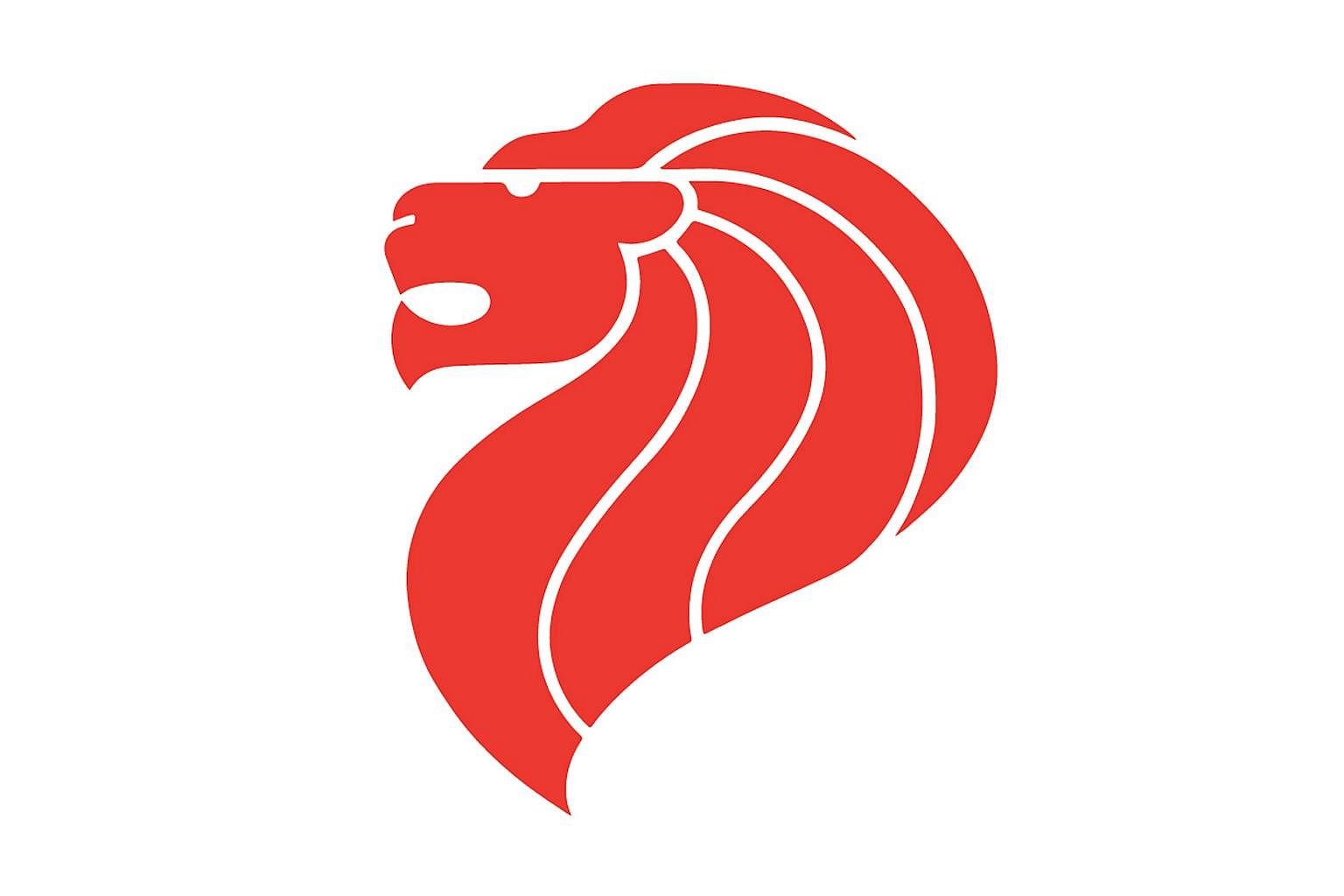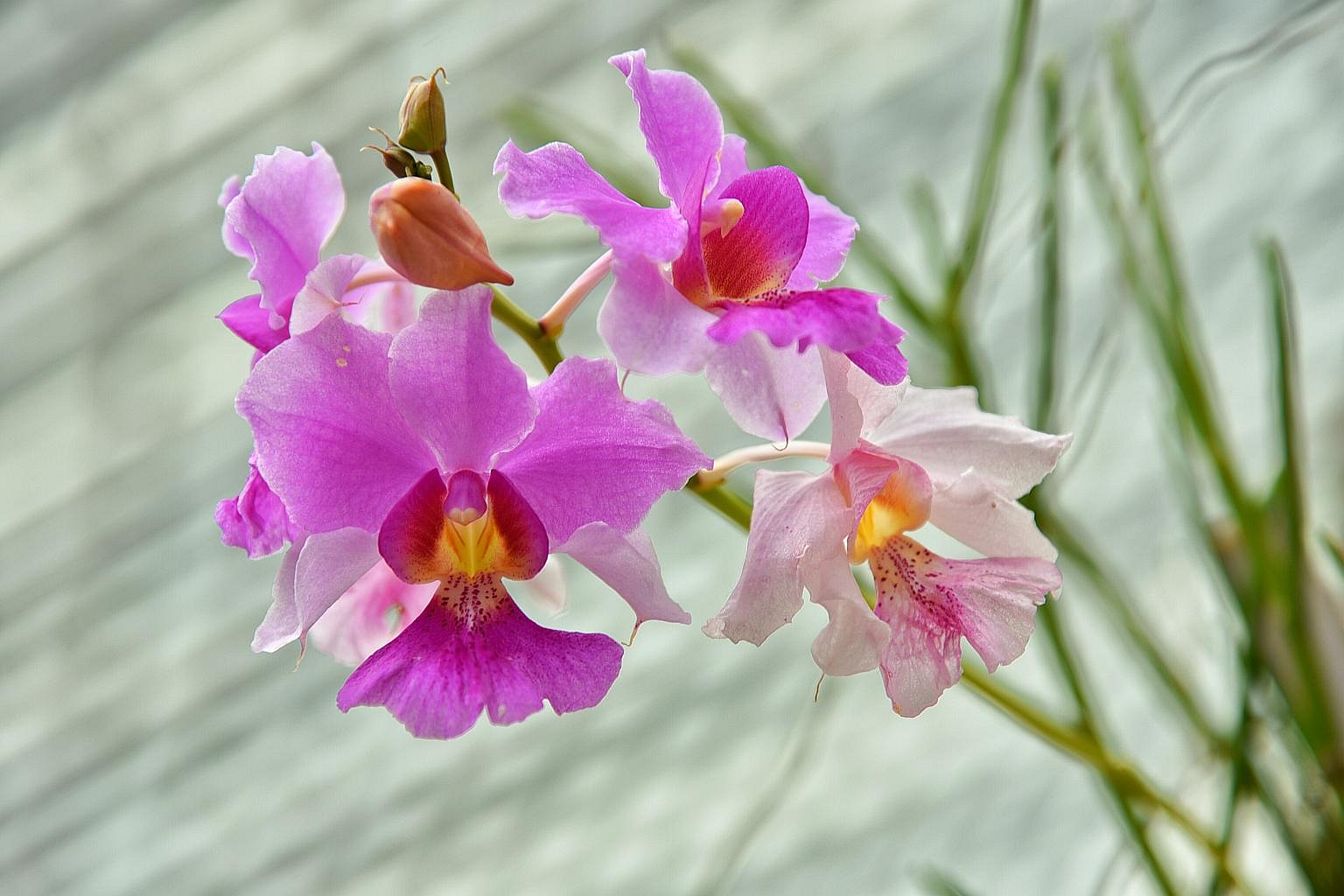SINGAPORE - The lion head, public seal, national pledge and national flower Vanda Miss Joaquim will be formally recognised as national symbols alongside the state flag, state crest and national anthem, after Parliament passed changes to the law on Tuesday.
Here are some things to know about the four new national symbols:
1. Lion head symbol

The lion head is an official symbol launched by the Government in 1986 as an alternative to the more formal national flag and state crest, which are governed by legal restrictions surrounding their use and display.
It was designed by Mr Michael Lee, a senior art director at Gartshore Keer and Lim advertising agency. His design was chosen over other motifs like those of Housing Board flats and palm trees.
The lion's mane has five partings that represent the same ideals as the flag's five stars –democracy, peace, progress, equality and justice.
The symbol's official colours are red, white or black, which users should not deviate from, though it has been featured in outline form, embossed or portrayed as a watermark.
Its design should not be modified or have words or graphics superimposed over it.
While Singapore companies can use the lion head symbol to identify themselves with Singapore, it should not be taken to indicate official endorsement of the companies' products.
2. Public seal

The public seal of Singapore consists of the National Coat of Arms of Singapore encircled by the words "Republic of Singapore". It represents the Republic and is affixed to state documents.
The National Coat of Arms, or State Crest, was created in 1959 as a symbol of Singapore's status as a self-governing state.
The crest was conceived by a committee led by then Deputy Prime Minister Toh Chin Chye, who sought the help of 25-year-old newlywed artist Joseph Teo to produce the design.
Mostly associated with government institutions and official documents, it is also imprinted on the national currency and the cover of the Singapore passport.
In the State Crest, a lion on the left embodies Singapore, while a tiger on the right signifies Singapore's historical ties with Malaysia. Together, the animals hold up a shield emblazoned with the motifs of the flag – a white crescent moon and five white stars against a red background. The Republic's motto, Majulah Singapura, runs in a banner under it.
The public seal is to be kept by the president, and will come under statutory safeguards.
Three presidential symbols – the presidential crest, standard and seal – will also be given statutory recognition.
3. National flower

In 1981, the Ministry of Culture formed a national committee to select a representative national flower.
The committee deliberated over 40 types of flowers to find one that is popular, free flowering and colourful. In the end, the Vanda Miss Joaquim was chosen for its "resilience and year-round blooming quality".
A cross between Vanda hookeriana and Vanda teres, the orchid is named after Miss Agnes Joaquim, a Singapore-born Armenian who bred the flower in her home garden in Tanjong Pagar in 1893. It was recorded as Singapore's first orchid hybrid.
The orchid can be found in the National Orchid Garden, the Botanic Gardens, the Mandai Orchid Gardens and the Vanda Miss Joaquim Park in Tanjong Pagar.
There are currently no guidelines regulating the use of the national flower.
4. The pledge

Multiple drafts of the national pledge were created in 1966.
The phrase "I pledge" was changed to "We, the citizens of Singapore, pledge", and the phrase "to forget differences of race, language and religion" became "regardless of race, language or religion".
The final version was drafted by then Foreign Minister S. Rajaratnam to promote national pride, following Singapore's separation from Malaysia in 1965.
The pledge exists in English, Malay, Mandarin and Tamil, unlike the national anthem which should be sung only in Malay.
Since its inauguration, the taking of the pledge has gone through further changes.
At first, it was recited with the right hand raised above the shoulder. Since 1988, at the suggestion of the Defence Ministry, it has been recited with a clenched right fist over the heart, so that it looks more uniform and "better reflects the emotional aspect", according to the Education Ministry.
The pledge cannot be used for commercial purposes.

